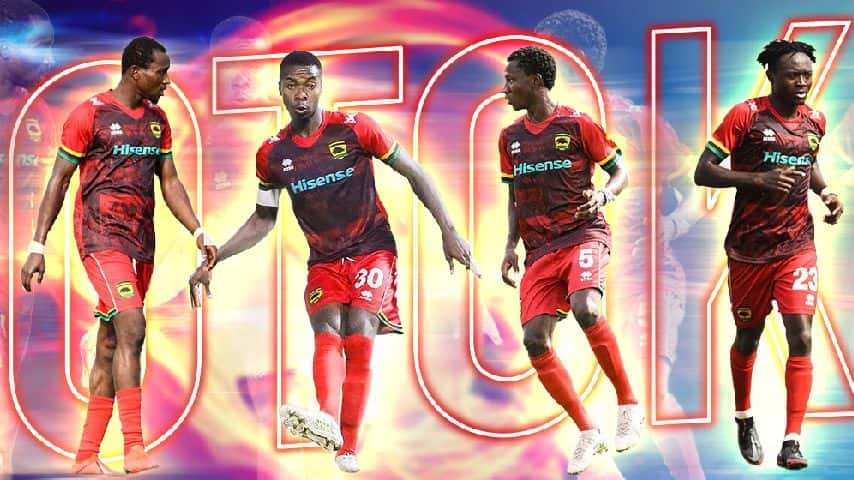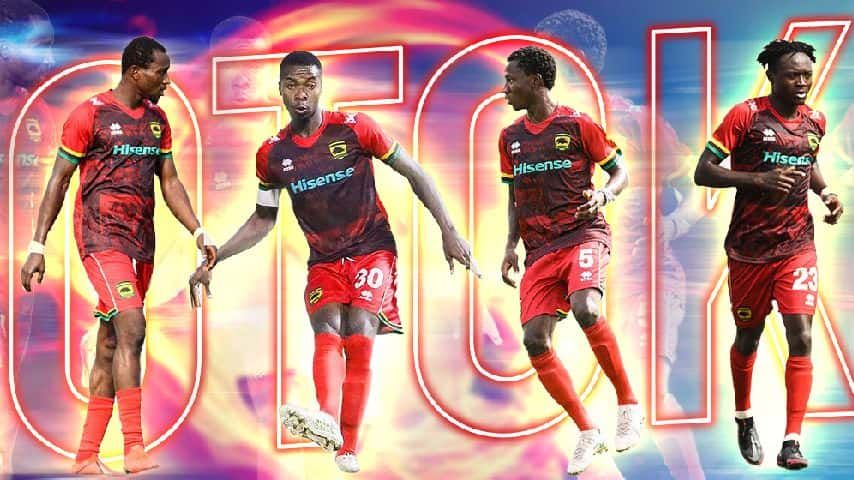The history of the Asante Kotoko sports club can by no means be called simple. There are both positive moments and triumphs, as well as misfortunes and even tragedies. Despite all this, this football team from Ghana was able to achieve such success, which is extremely difficult to achieve.
The history of the club dates back to 1926. Its main initiator was Kwasi Kumah. He wanted to create his own football team since he first saw a professional football match. The game fascinated him so much that he wanted to try himself in this sport. Of course, players were needed to create a team. Since this game was a novelty, none of the volunteers knew how to play it, but many wanted to try it. Kwasi Kumah bought a uniform for 13 players with his own money, and with his friend Asamoah they created their own football club called Ashanti United Football Club.
For many years, the team played quite poorly because there were no real professional players or at least real athletes in it. Besides, the team has continuously been changing its name for several years. Unfortunately, changing the name repeatedly did not help the team, and over the next few years, it failed to achieve any significant results. A significant change occurred around 1935. Responsible for these changes was Mr. J.S.K. Frimpong is very interested in football and this team. He is the one who first proposed to change the name of the football club to Kumasi Asante Kotoko SC. Since "Kotoko" means "Porcupine", the use of this name required King Ashanti’s permission because porcupine is their symbol. King Prempeh II gave his consent, and since then, the name of the club has not changed.
The first serious games for Asante Kotoko came with the creation of the African Cup of Champions Clubs. This tournament brought together the best teams in Africa in order to find the best among the best. Asante Kotoko first competed in the African Cup of Champions Clubs in 1966, where she reached the quarterfinals. Although it was a pretty good result for beginners, they still knew they could do better. Already in 1967, they reached the final but still lost to TP Englebert from Congo. The real breakthrough for them was the 1970 tournament. In it, Asante Kotoko proved her skills and became the champion, defeating TP Englebert. From that moment on, all of Africa and part of the world learned about this team. This success significantly increased the fan base and brought new contracts for the team. Over the next few years, Asante Kotoko did not decrease pace and regularly showed beautiful game going to the finals in 1971, 1973, and 1982.
Another significant victory came at the 1983 tournament. In it, Asante Kotoko faced the strongest African team Al-Ahly from Egypt. This match was extremely difficult. The first match did not yield results. Both teams played at a very high level, and neither of them could score a goal. The rematch took place on December 11, 1983. Despite a difficult game, Samuel Opoku Nti managed to score in the 22nd minute, and this goal was the only one left in the match that led Asante Kotoko to victory and won the title of two-time African champion.
Unfortunately, since then, Asante Kotoko no longer received the title of African champion in this tournament, but this does not mean that they showed a bad game. On the contrary, Asante Kotoko is the leader of the African season runner-up championship. They reached the finals and took second place in 1967, 1971, 1973, 1982, and 1993. Of course, the African Cup of Champions Clubs is not the only tournament in which this team participates. Other tournaments in which Asante Kotoko participates include the CAF Champions League, in which the team participated ten times, the CAF Confederation Cup, in which the team participated six times, and in 2004 even reached the final, and the African Cup Winners Cup, in which Asante Kotoko participated seven times, including reaching the finals in 2002.
Much can be said about the number of awards of this team because their number is simply outrageous. Ghana Premier League alone, Asante Kotoko have won, just think, 24 times. Ghanaian FA Cup is also an important Ghanaian championship. And in it, as in the Ghana Premier League, Asante Kotoko ranks first in the number of victories (9). Special for the team was the Ghana Super Cup, in which they are not only champions in the number of victories but also set a record that still can not be broken. The fact is that for three years, Asante Kotoko won this championship, making it the only team that was able to win the championship in this tournament for three years in a row. Of course, that's not all. Asante Kotoko also has a large number of titles from the GFA (Ghana Football Association), which they have earned with their numerous victories.
To date, Asante Kotoko is the sixth-best and largest football club in Africa and the largest in Ghana. To develop the football club in both business and sports, they have signed mutually beneficial contracts with various companies and other clubs, such as Sunderland. Such mutual assistance benefited both teams, which only increased their efficiency.
Of course, traditionally, the football club’s main patron Asante Kotoko is the king of Ashanti - Osei Tutu II. The main training of the team takes place in Kumasi, which is located in the Ashanti region. As in most football teams, their form directly reflects the main national colors, and besides, the colors of the coat of arms of Ashanti, namely yellow, green, and red. Their emblem is also directly related to Ashanti because it depicts a porcupine. The symbol is dominated by green, yellow and black. Asante Kotoko's home stadium is Baba Yara Stadium, which is located in the Ashanti region and opened in 1959.
As time has shown, Asante Kotoko’s history has had both ups and downs, both losses and victories, but despite the result, they always try to be the best. This sports club was created not for business but out of pure love for the game. It was this love of football that for years forced both children and adults to pursue a goal. And for almost a century, this tradition has not changed. Football continues to be the most popular sport in the world, and every year it is replenished with new players who have spent years training to get into professional teams. Of course, Asante Kotoko players are no exception. This number of victories was given not just like that, but only due to hard training, the desire to achieve more, and the love of the game. These factors make Asante Kotoko the champions they are today, and we can be sure that they will not give up in the future.







